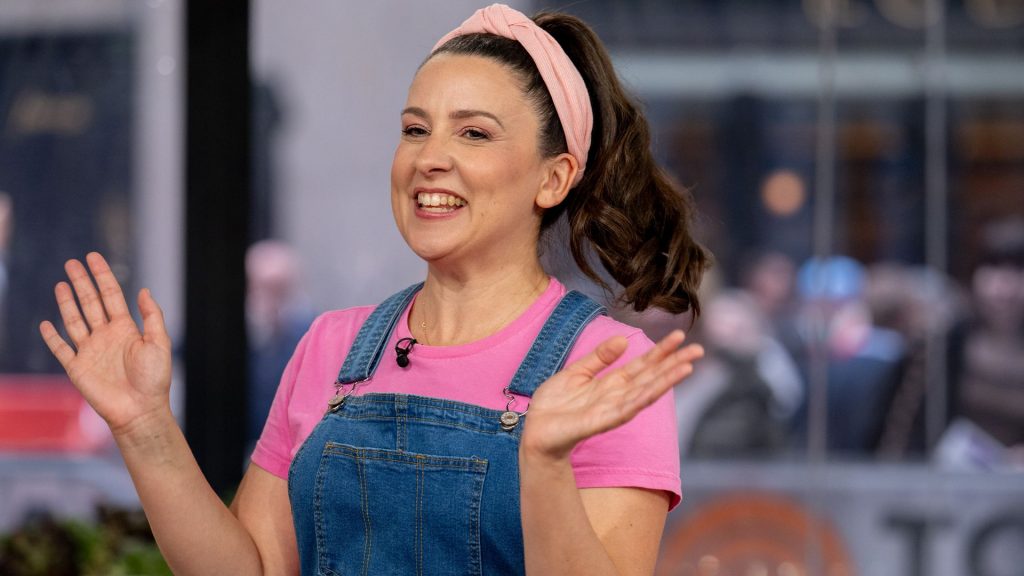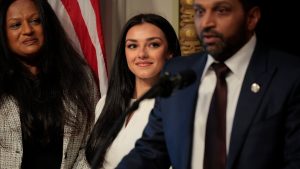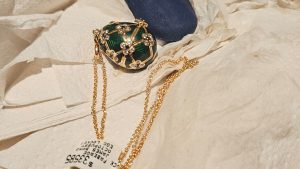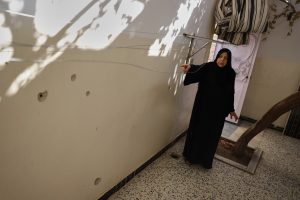From Mr. Rogers to Ms. Rachel: What’s changed in a generation of kids’ TV

Before Frances Turner lets her 4-year-old daughter watch a new show, she researches its benefits. Sometimes, she even prescreens the show by watching it herself.
Though it can be time-consuming, Turner said it’s a small price to pay to ensure her daughter, Naomi, consumes the proper media content to best help her development.
Turner, who lives in Baltimore with her husband and Naomi, said she seeks out shows that display strong female characters and protagonists to reinforce that Naomi can do anything and is valued.
“We have a flexible approach when it comes to TV,” Turner told Straight Arrow News. “But I am really particular about the messaging, and I am particular about trying to make watching a show dedicated family time.”

What’s changed in children’s television?
Children’s television isn’t what it used to be. Programming that used to take months to create, produce and distribute is now just one segment of a crowded market.
And that market is growing: the emergence of content creators, paired with the evolution of technology weaving its way into every facet of life, contributes to a steady flow of children’s entertainment, just a click away on smartphones, tablets and television. While experts say having more options for entertainment can be beneficial, it can shift added responsibility on parents and caregivers to vet the show’s value.
Rachel Barr, chair of the department of psychology at Georgetown University, said children’s shows used to be planned and thoroughly discussed — allowing for checks and balances to ensure content would both resonate with a child and also make sense. However, as digital technology evolved, pressure has increased to create more on an expedited timeline. As a result, those checks and balances have fallen to the wayside, according to Barr.
She says that it can be difficult for parents to navigate this space because there are so many options and no real regulations.
“Parents need a bit more support around this, I think, in terms of figuring out guidelines for what is child-centered for the benefit of the child, rather than what is profit-centered,” Barr told SAN.
Saturday mornings in the 1980s were dubbed “junk food for the minds” with stations playing hours of cartoons and featuring television shows that served as ads for action toys. However, the creation of the Children’s Television Act in 1990 created a major adjustment by requiring all stations to air at least three hours of educational programming a week.
As technology continued to evolve, platforms like YouTube exploded in popularity, and created a major shift in how children consume media, with nearly limitless options that are free and easily accessible. And when a video has finished playing, YouTube’s algorithm will already have something else in the queue to play.

What kind of videos are beneficial for young kids?
Rachel Griffin Accurso, known to young children and their parents around the globe simply as “Ms. Rachel,” started creating children’s content on a whim. Her goal was simple: To help her son, who was behind on key milestones, particularly speech. It struck a chord. Accurso was dubbed the “Beyoncé for toddlers” and has amassed more than 15 million YouTube subscribers. Her content is now featured on Netflix.
Her show is filled with participatory cues — moments in which characters speak directly to the camera and pause, allowing the viewer to respond out loud.
These cues are proven to help vocabulary and comprehension among children, according to a media psychologist at the University of California, Davis. Shows like “Blue’s Clues” and “Dora the Explorer” – hits of the 1990s and early 2000s, respectively – are known for using these strategies.
Barr, a developmental psychologist, said children’s language and comprehension skills are constantly developing at a rapid speed. That makes it hard for them to process content on screens, even without the extra “bedazzling” and “distractive bells and whistles” that Barr said will keep children returning to the shows, but “don’t necessarily help you comprehend what’s going on.”
The easiest kinds of content for children to understand are short, structured narrative stories that span about 6 to 10 minutes, said Barr, who focuses her research on children under the age of 5.
“The episodes are concise but are long enough to get a story to happen, and even something to get resolved,” she said. She pointed to shows like “Mr. Rogers’ Neighborhood,” “Caillou” and “Daniel Tiger” as top examples.

How can parents determine what shows are best for their kids to watch?
The shows can also help teach lessons that children can utilize in day-to-day life, like how to breathe deeply or calm down. Often, experts say these shows can be even more impactful with a parent or caregiver watching alongside a child to help reinforce on-screen lessons.
Amanda Venancio, a 33-year-old from Toronto, said she reached her breaking point one day as her 2-year-old twin girls watched Ms. Rachel.
“I jumped on that Ms. Rachel train when I had children,” Venancio told Straight Arrow News. The mom said she appreciated the show’s help in sparking some of her twins’ milestones. But while her children enjoyed Accurso’s sing-songy voice, it began to feel repetitive for their mother.
“There’s only so many episodes, so it’s like the same thing over and over and over and over again,” she said. “I was like, ‘I can’t do this anymore!’”
Unsure of what to play for her daughters, she turned back to her childhood and flipped to an episode of “Franklin.”
She saw a near-immediate change in the twins.
“It was easier for my kids to absorb,” she said. “They were calmer, less rambunctious, and they were totally obsessed with the shows.”

What happens when kids watch slower-paced programming?
From there, she began to play more of the same shows she watched as a child, like “Winnie the Pooh,” “The Big Comfy Couch” and “Little Bear.”
Venancio said the shows are slower. Gentler. Playing those shows, steeped in storytelling, has helped her children as well as herself.
Her nostalgia programs of choice were the polar opposite of “Cocomelon,” which she found overstimulating, even as an adult listening and watching it in the background.
Barr said that it’s an example of how parents can tell whether a show is beneficial for their child. If it’s overstimulating for an adult, it’s likely not a good fit for a child, even if the show claims it’s suitable for children.
“Even though they’re looking, it doesn’t necessarily mean that they’re learning,” Barr said. “Technically, the show may be designed for children, but it is not child-centered. It might have lights and rainbows, but it’s not child-centered in terms of thinking about how the child learns and what information they can relate to.”
Barr recommends using resources like Zero to Three or Common Sense Media to determine whether a show is a good fit for children. She also said that generally anything on PBS Kids is a great option because the content comes from a reputable platform that centers on children’s development.





